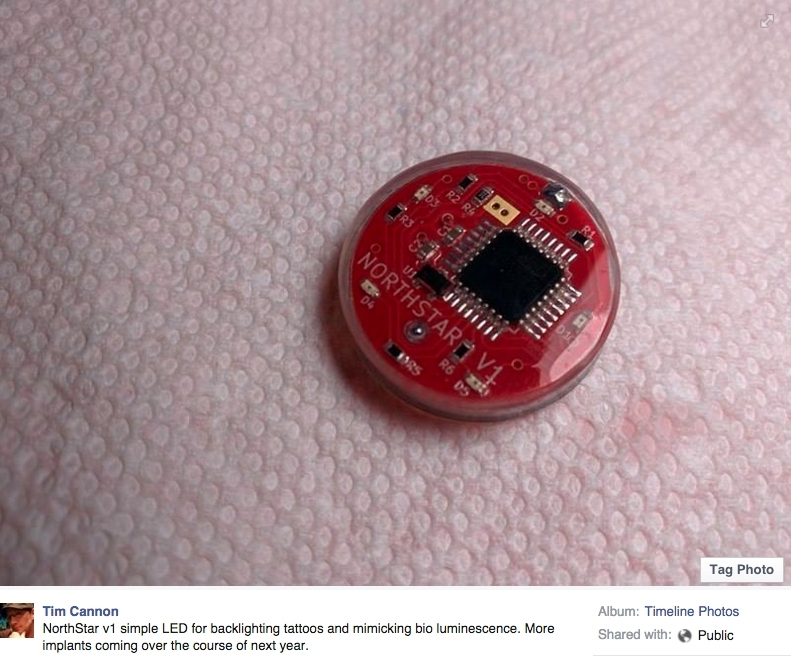The biohackers illustrated 3 implants operations last Saturday done in Dusseldorf simultaneously. According to Motherboard, “Northstar V1” chip, an LED disc, in terms of size is somewhat similar to the size of a coin making it considerably smaller than its predecessor, the Circadia 1.0 computer chip. The LEDs light up when activated by a magnet.
The implants were performed on three people and was carried out by Swedish tattoo artist, Jowan Österlund at the Cyborg Fair in Dusseldorf, Germany. The insertions in Germany involved short surgical operations that took 15 minutes for the chip to get activated. All the demonstrations were performed in very strict conditions.
On activation, backlights mimic bioluminescence or light up the tattoos. The LED lights begin to blink if a device has a magnet attached to it. After 10 seconds, the LED lights go into sleep mood. Before they are surgically removed, it is expected that the light can be lit up 10,000 times like this. Grindhouse Wetware, the brainchild behind the device is a self-proclaimed “rag tag group of programmers, engineers, and enthusiasts,” who hoped to blend the development of wearable technology, along with the punk ethos of body modification.
Speaking to Motherboard, the group said: “We want to transform science fiction into reality. To do so, it’s imperative that we have a decade-long study. The people at Grindhouse Wetware aren’t career academics. This is about passion and citizen science.” When they were questioned by MotherBoard to tell the reason behind development of this device, Grindhouse Wetware said: “You know, people from the biohacking community wanted it. They contacted us because they wanted to light up their tattoos. That’s how we generate our implants, we let the community inspire us.” They added “For anyone who wonders what the point is for the device. Obviously it would be easier to measure biomedical data with wearable technology instead.” “However, the device for us at Grindhouse is the first step toward a higher biology, and a step toward human-computer interfaces. We want to ensure that the future of technology is in your hands, affordable, and easy to obtain.” These implants are to be launched somewhere next year. They’re also in the thinking stages of an upgraded Northstar V1 chip, which will be a “rechargeable device that adds gesture recognition and Bluetooth capabilities, enabling users to control electronic devices with hand movements, as well as add patterns or color variations to LED.” Kaspersky security company had illustrated a similar experiment in September 2015 with only being that it was the RFID Biochip that was installed in a human hand. The implant seems crazy, as putting a foreign body in your skin is not only dangerous but it could also lead to possible infections given that the chip’s circuitry, even though it is encased in plastic contains hard metals. There are also high chances of having severe allergic reaction triggered by the said hard metal. So, it would be advisable to think before you put yourself under the knife.
